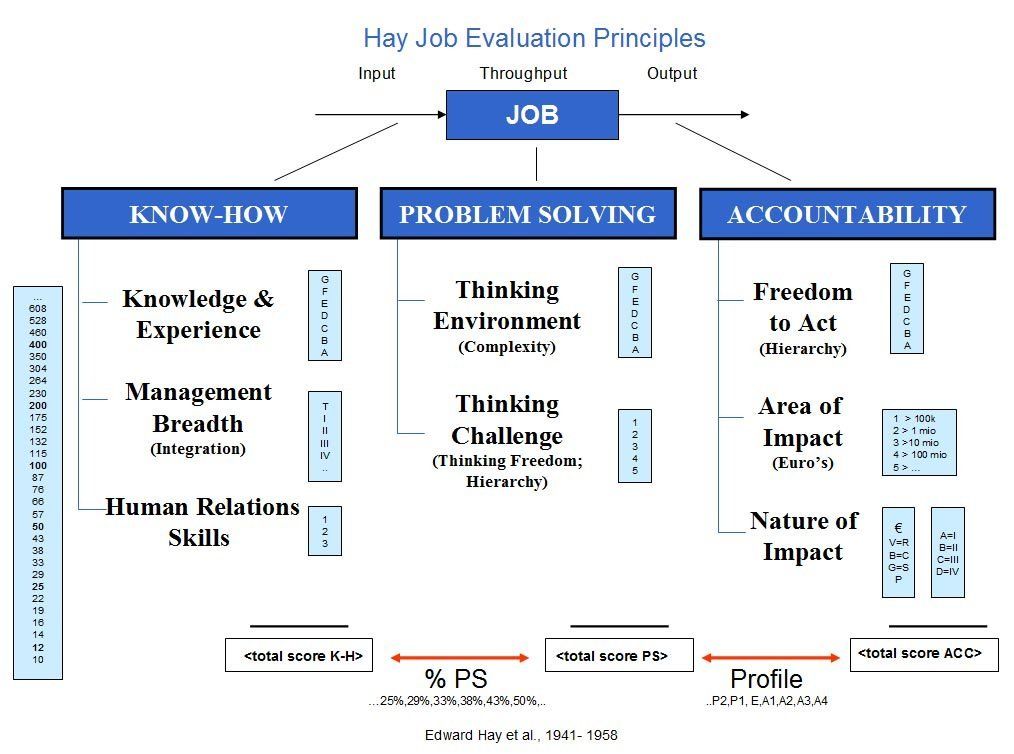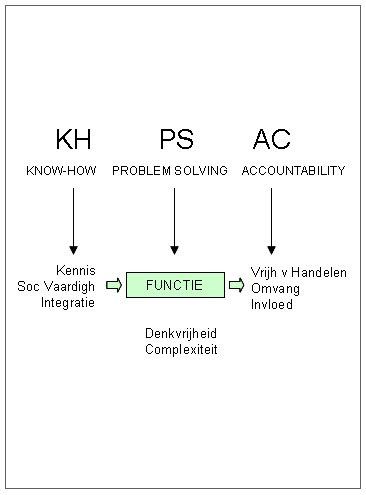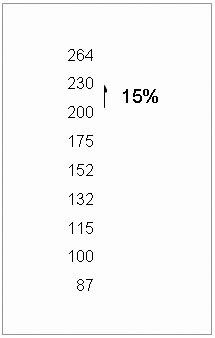HOW DOES THE HAY METHOD WORK?
WHAT MAKES THE HAY METHOD SO SPECIAL?
If you would like to read this page again, please download the PDF version"Hay-special".
The Hay method differs from other job evaluation systems in a number of very important points:
1. The system is a system developed with input from managers and substantiated by scientific publications (Edward Hay et al. '40 - '50).
2. The Hay method was originally developed in response to so-called 'point systems' that often result in an illogical ranking of functions. If you use Hay correctly, functions are always compared with each other.
3. The Hay method was originally designed for operational functions. It was not until the late 1950s that it was demonstrated that the method was also ideally suited for management positions. This makes the Hay method (and therefore also Themis) one of the few systems that can be applied at all levels in the organization.
4. It is a simple system in which a function is decomposed into 3 Factors (originally devised by E. Benge (ref 1941, 1957) and is considered as an input (KH - Know-how) - throughput (PS - Problem Solving) - output (AC - Accountability) process.
5. The distribution of the weight of the position over the 3 factors determines the character of the position and is represented by the so-called Profile.
It Long Profile indicates the mutual ratio in percent, so KH % + PS % + AC % = 100,
It Short Profile indicates the ratio between AC and PS: if AC is much larger than PS then it is a strongly result-obligatory position, if AC is (much) smaller than PS then the position has the character of an effort obligation (e.g. Researcher).
Eugene Benge invented the distribution of the weight over a limited number of factors, William Turner made the step by making these factors 'dimensionless' by expressing them as a percentage, Dale Purves pointed out the character of the function that is expressed by this (ref 1957)
6. The Hay system recognizes connections between the factors and those of related functions in the hierarchy or in the work process. For example, PS is related to the hierarchical layer in the organization.
The Hay method differs from other job evaluation systems in a number of very important points:
1. The system is a system developed with input from managers and substantiated by scientific publications (Edward Hay et al. '40 - '50).
2. The Hay method was originally developed in response to so-called 'point systems' that often result in an illogical ranking of functions. If you use Hay correctly, functions are always compared with each other.
3. The Hay method was originally designed for operational functions. It was not until the late 1950s that it was demonstrated that the method was also ideally suited for management positions. This makes the Hay method (and therefore also Themis) one of the few systems that can be applied at all levels in the organization.
4. It is a simple system in which a function is decomposed into 3 Factors (originally devised by E. Benge (ref 1941, 1957) and is considered as an input (KH - Know-how) - throughput (PS - Problem Solving) - output (AC - Accountability) process.
5. The distribution of the weight of the position over the 3 factors determines the character of the position and is represented by the so-called Profile.
It Long Profile indicates the mutual ratio in percent, so KH % + PS % + AC % = 100,
It Short Profile indicates the ratio between AC and PS: if AC is much larger than PS then it is a strongly result-obligatory position, if AC is (much) smaller than PS then the position has the character of an effort obligation (e.g. Researcher).
Eugene Benge invented the distribution of the weight over a limited number of factors, William Turner made the step by making these factors 'dimensionless' by expressing them as a percentage, Dale Purves pointed out the character of the function that is expressed by this (ref 1957)
6. The Hay system recognizes connections between the factors and those of related functions in the hierarchy or in the work process. For example, PS is related to the hierarchical layer in the organization.
7. The method is based on geometric
scales, i.e. that steps in the factors (= main characteristics) are always ordered according to the principle that a higher stage is always a certain % higher than the previous one. In the Hay method this is 15%
(which causes series of numbers to double after 5 steps). This methodical approach was devised by S. Burk in 1938 (ref 1951, 1957) and appeals to the feeling that "1 euro more may be interesting at a lower salary level, but makes no impression at a higher salary level"; the increase must be percentage.
Originally the factors had different percentages, but already in 1948 (ref) they had reached the point where one and the same percentage was used, namely 15% - according to E. Hay (1957) actually practical reasons because working with different percentages proved to be too cumbersome in practice (ref 1950).
8. The 3 factors KH, PS and AC are divided into sub-factors but, unlike other job evaluation systems, no points are awarded to them. As a result, the Hay system is not a 'point system' (ref. 1951 Hay & Purves, 1954).
9. The system is, because of the step concept, pt 5, a 'discrete' system, ie small differences in job content do not matter. There has to be a explainable difference are between the feature and the heavier variant.
For example, if a KH factor scores 100, the score cannot be increased to 101 points, for example because the employee has followed a course. There must be such a higher KH that it is generally recognized within the organization. The score is then increased by 15%, in this case to 115 points. (So you cannot 'nibble on points' to get to a higher scale). E. Hay and D. Purves define it steps concept as follows (scan 1951, opposite):
Originally the factors had different percentages, but already in 1948 (ref) they had reached the point where one and the same percentage was used, namely 15% - according to E. Hay (1957) actually practical reasons because working with different percentages proved to be too cumbersome in practice (ref 1950).
8. The 3 factors KH, PS and AC are divided into sub-factors but, unlike other job evaluation systems, no points are awarded to them. As a result, the Hay system is not a 'point system' (ref. 1951 Hay & Purves, 1954).
9. The system is, because of the step concept, pt 5, a 'discrete' system, ie small differences in job content do not matter. There has to be a explainable difference are between the feature and the heavier variant.
For example, if a KH factor scores 100, the score cannot be increased to 101 points, for example because the employee has followed a course. There must be such a higher KH that it is generally recognized within the organization. The score is then increased by 15%, in this case to 115 points. (So you cannot 'nibble on points' to get to a higher scale). E. Hay and D. Purves define it steps concept as follows (scan 1951, opposite):
10. Due to the step concept, not every total score is possible. For example, 800 is a legitimate total score, but 801 cannot exist. In addition, due to the coherence of the factors, a total score can only be achieved in one way (with the exception of P functions, the effort-required functions). For example, a total score of 800 points is only achieved with KH=400, PS=50%-200, AC= 200, so an E profile. So the total score immediately says something about the character of the position (ie Short profile).







